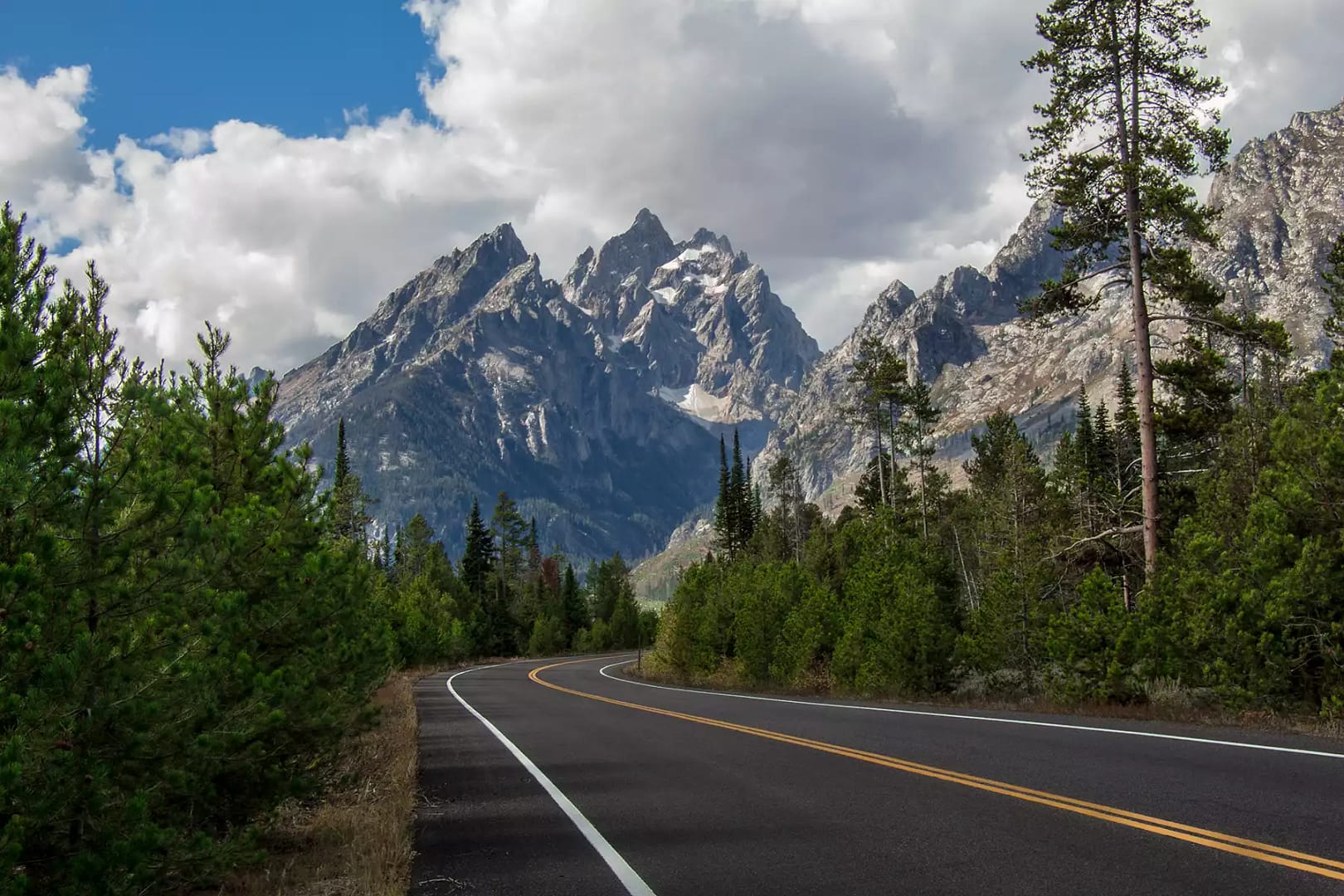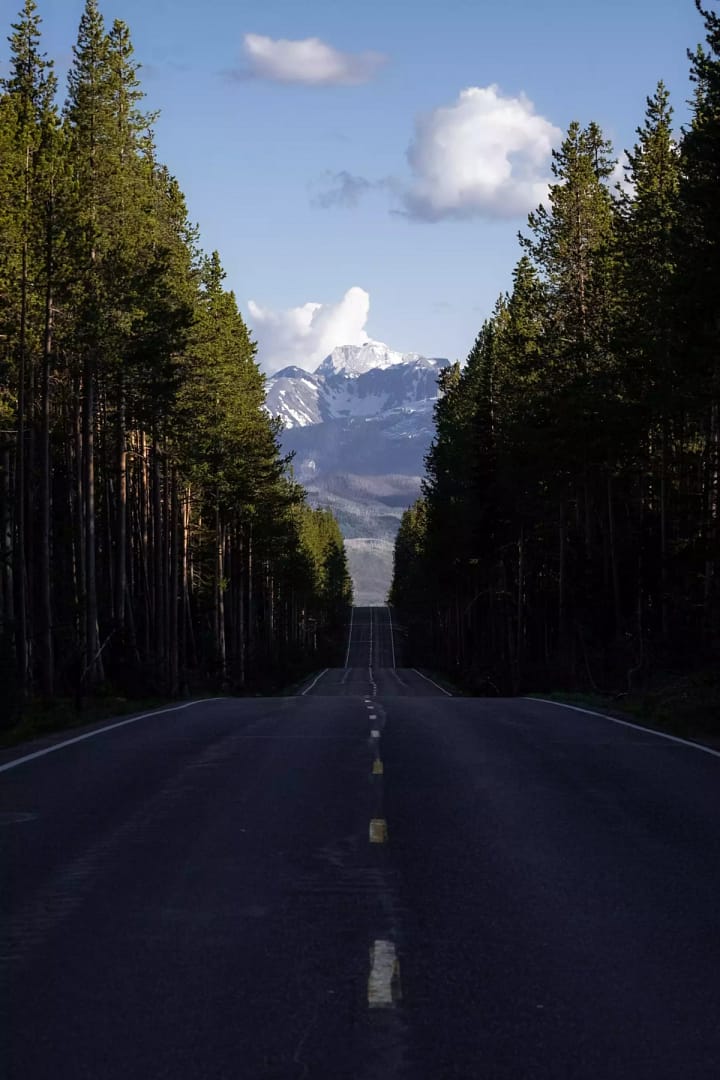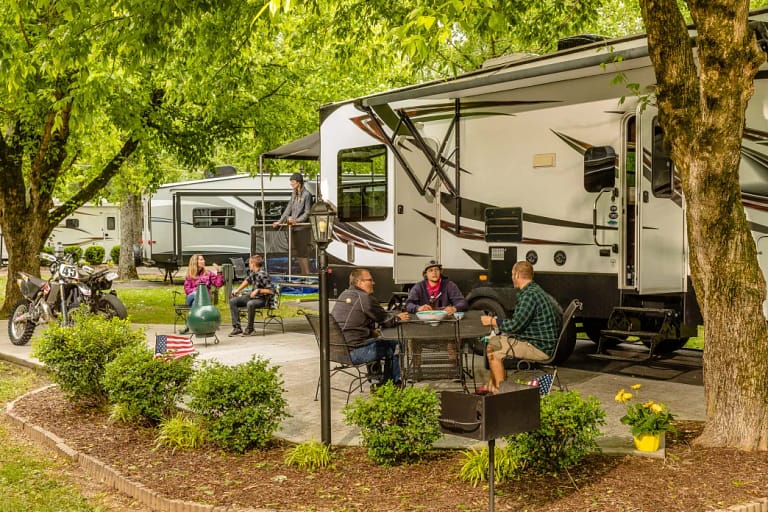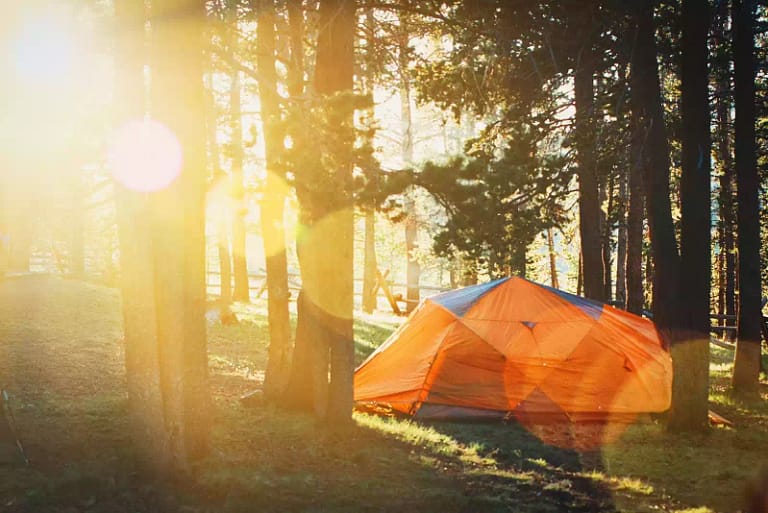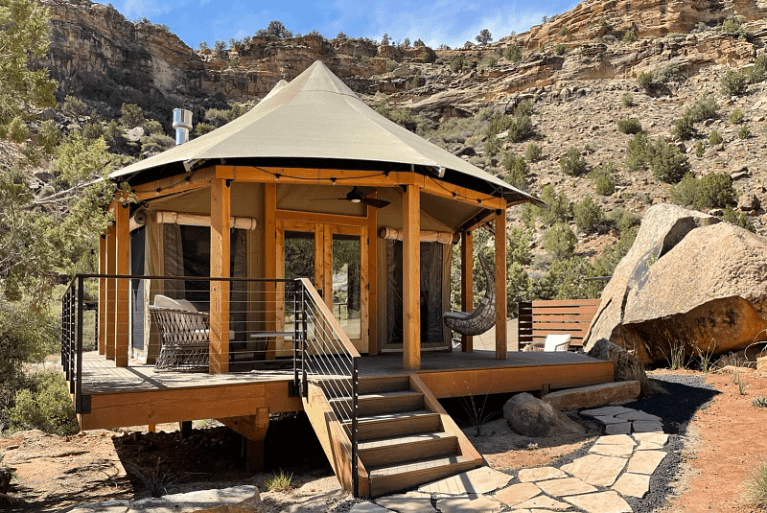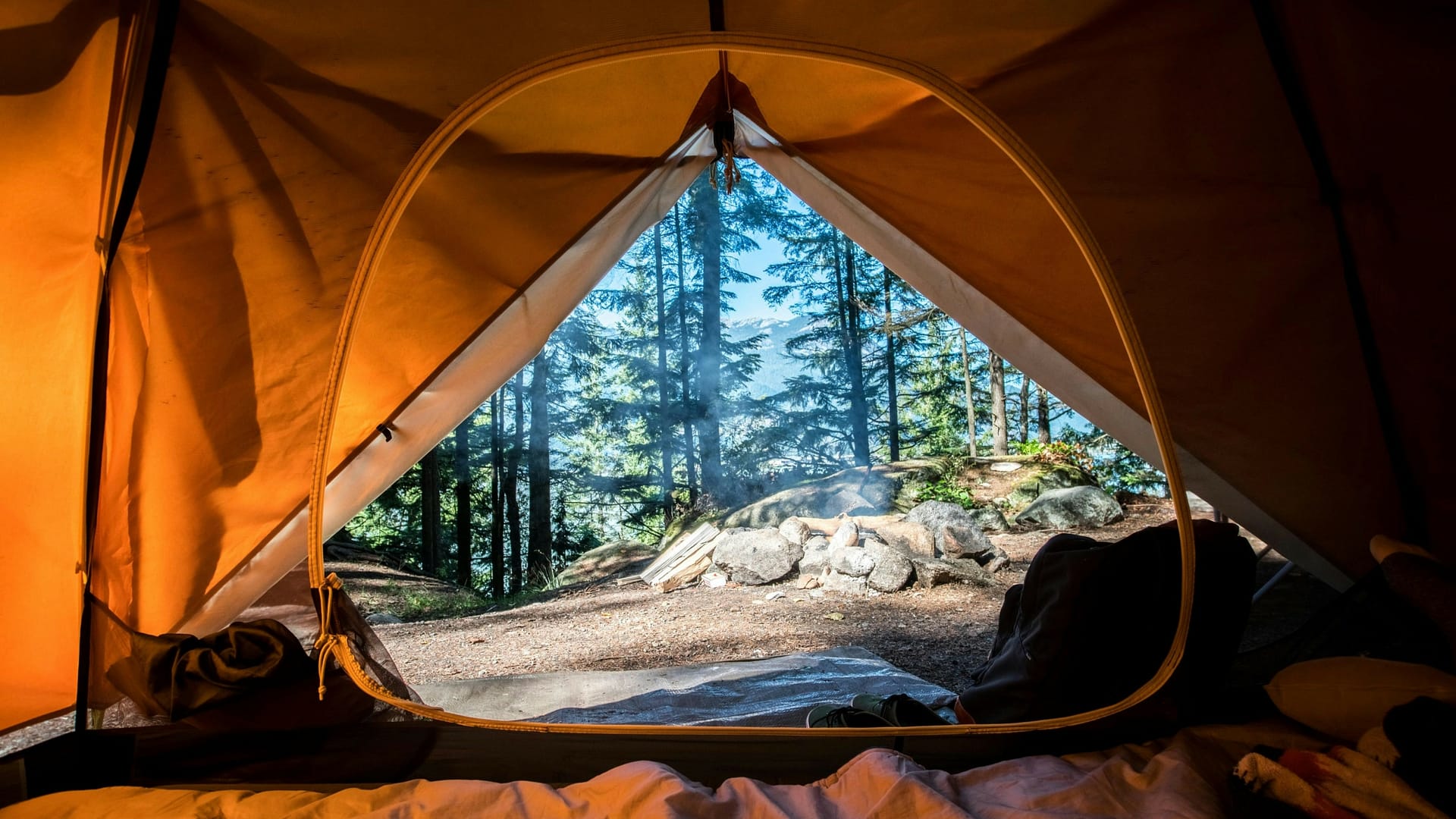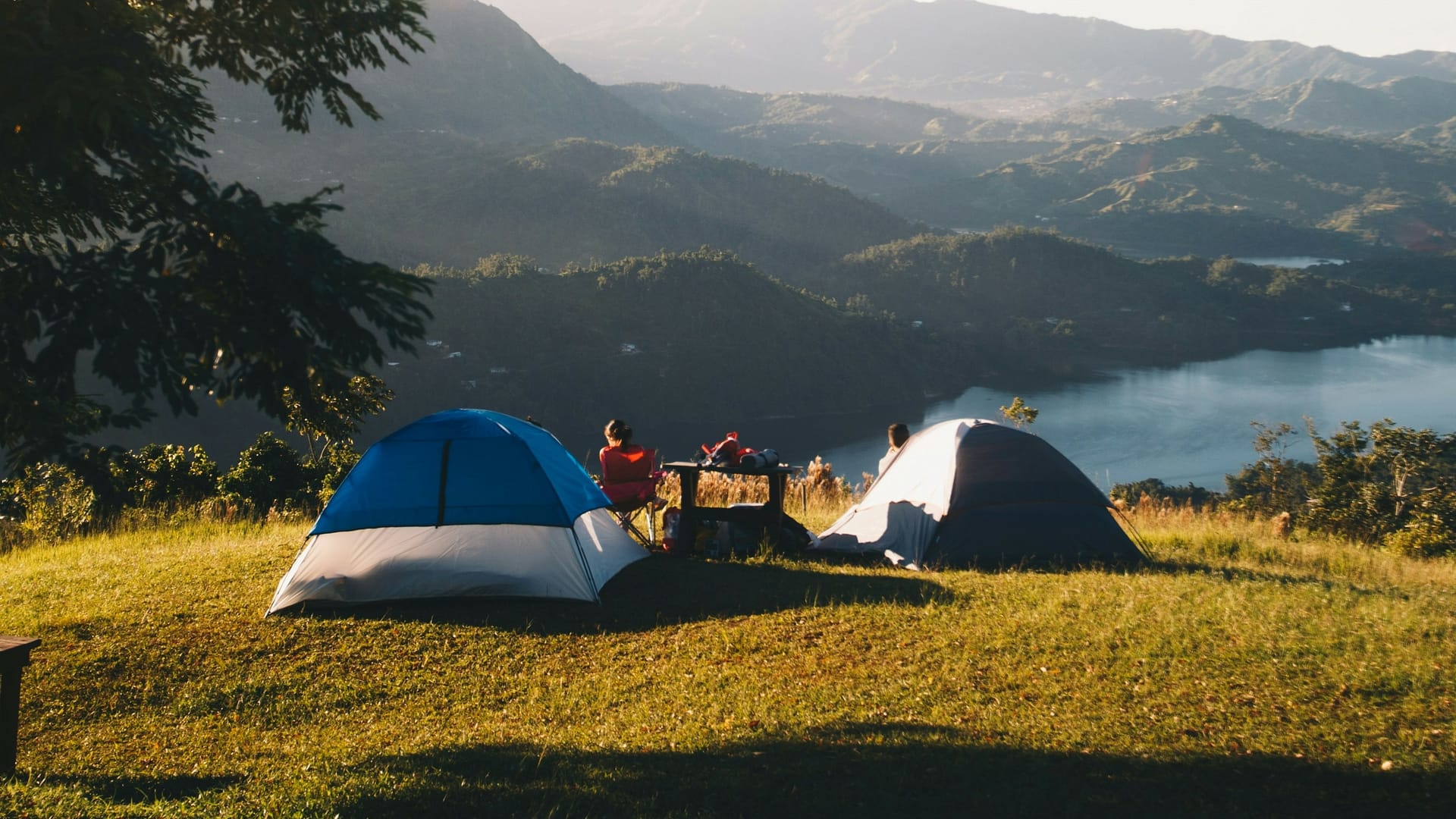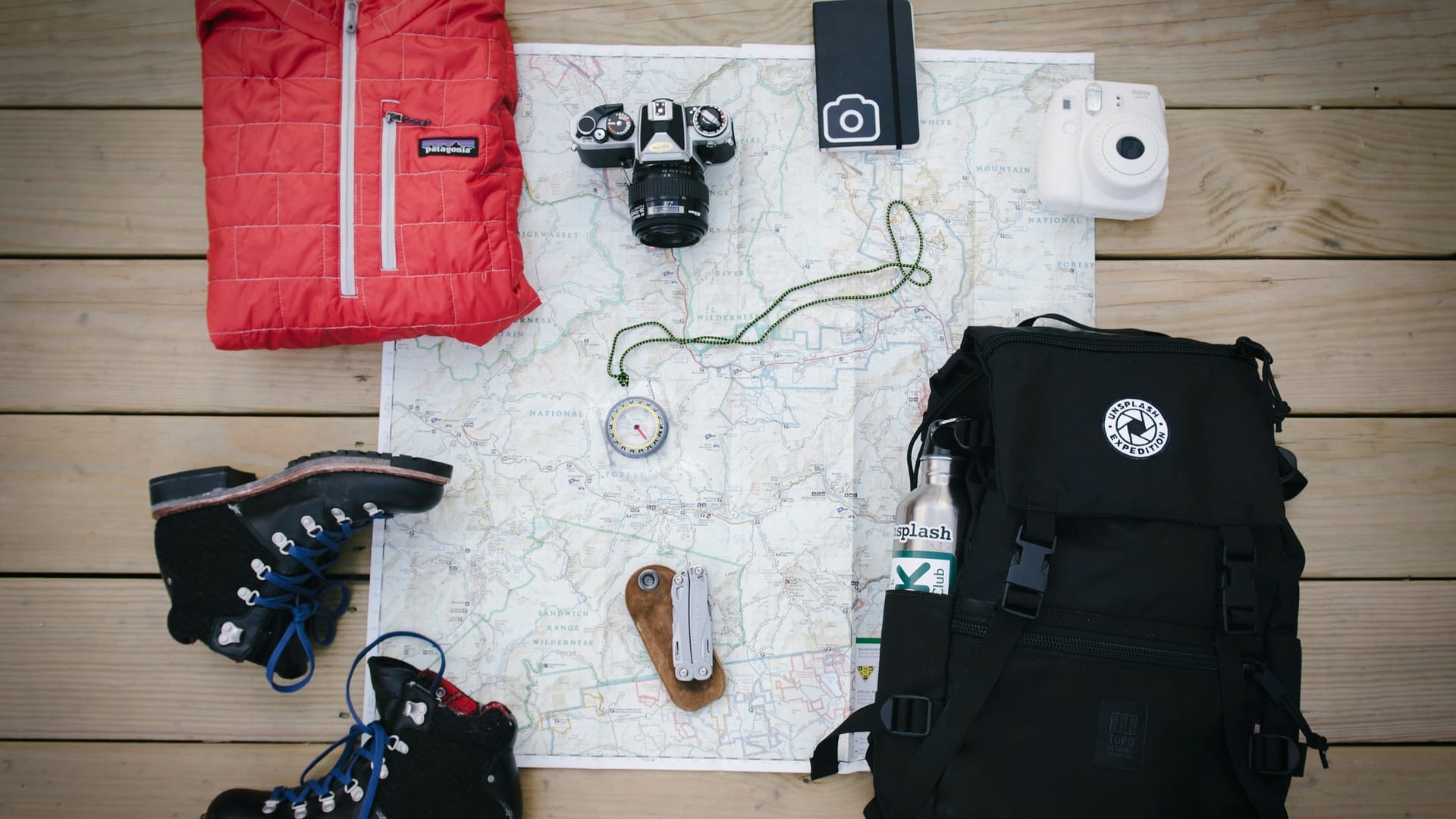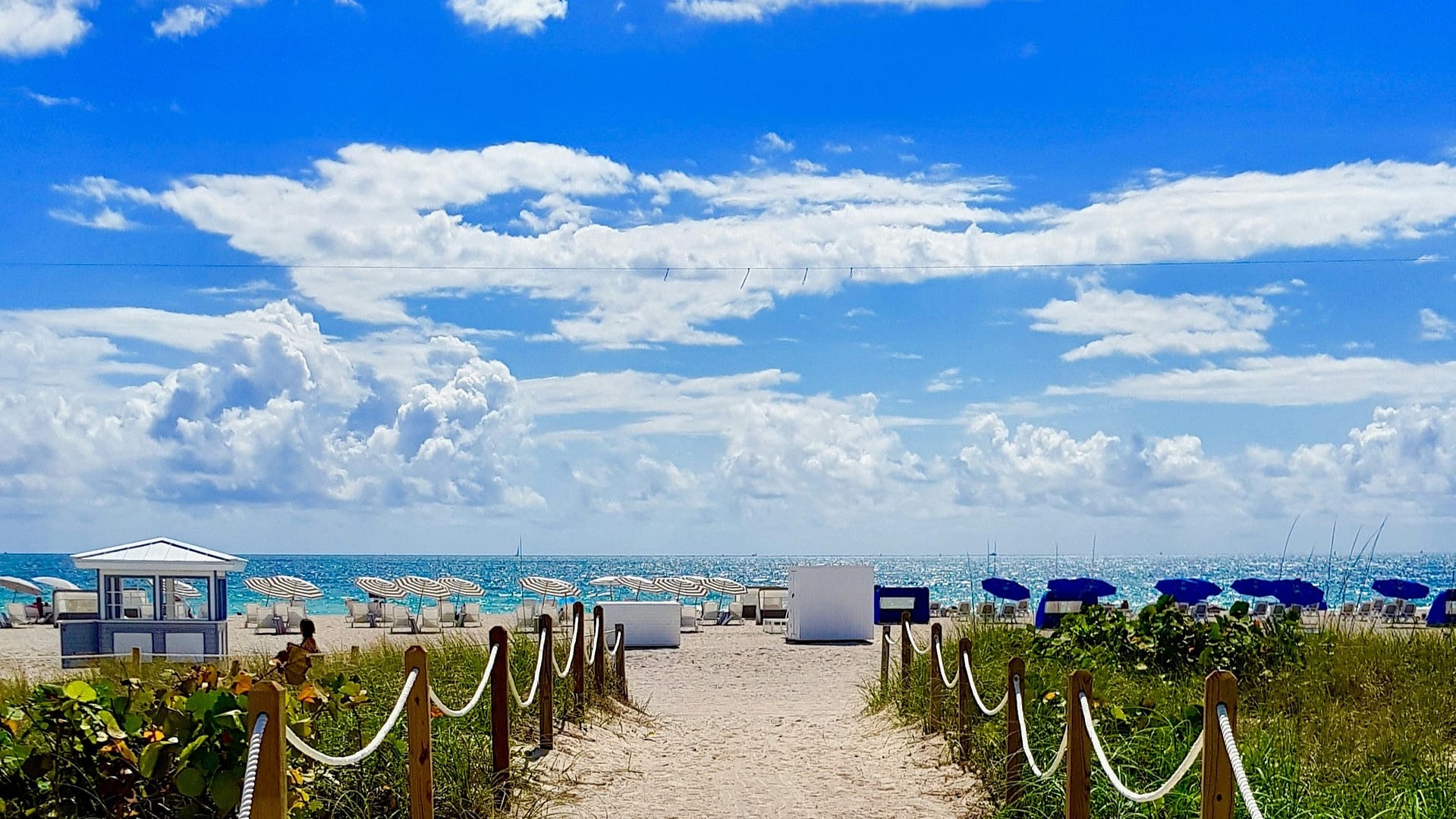Wyoming is a wild, mountainous state. That’s kind of its thing. And — assuming you’re no dummy — you wouldn’t be researching RV routes in Wyoming if you weren’t prepared to handle some winding, high-elevation roads. Of course, you’re aware of additional hazards caused by weather, wandering wildlife, and rock fall. And then there’s the possibility of the Yellowstone Supervolcano erupting and wiping out half the continent… but it’s cool. You and your RV are ready for anything!
It’s still an excellent idea to double-check your RV routes in Wyoming and make sure they’re not among the state’s most dangerous roads. The majority of roads in Wyoming are navigable by RV, but some are not recommended for the largest of vehicles or trailers, nor for inexperienced RV drivers.
In this article:
Toggle- Teton Pass Highway (Highway 22)
- East Entrances to Yellowstone
- Northeast Entrance to Yellowstone: US-212
- U.S. Highway 287
- Tips for Planning RV Routes in Wyoming
- Teton Pass Highway (Highway 22)
- East Entrances to Yellowstone
- Northeast Entrance to Yellowstone: US-212
- U.S. Highway 287
- Tips for Planning RV Routes in Wyoming
Teton Pass Highway (Highway 22)
A 17-mile stretch connecting Jackson, Wyoming with the Swan Valley region of Idaho, the Teton Pass Highway (WY-22) is universally recognized as a really bad road for RVs. It pops up on various lists of the most dangerous routes for big-rig RVs, and sometimes even claims the No. 1 spot. Congrats?
This rollercoaster-like RV route in Wyoming peaks at 8,429 feet, with a 10% grade on both sides, plus countless killer curves. It’s a twisting, turning, two-lane road with some of the steepest grades in the United States. It’s a white-knuckle drive in a standard vehicle, and it’s a very bad idea to use this as an RV route in Wyoming.
The Teton Pass Highway is open year-round, but winter is obviously more treacherous and subject to frequent closures. Trailers are not allowed on the road in winter. Avalanches and year-round moose crossings are added hazards.
Do you need another reason to avoid this RV route in Wyoming? How about this: There are two runaway truck ramps, and to use them on an east descent, you need to cross to the left through head-on, uphill traffic. Visualize doing that in your RV — nightmare fuel!
Alternative Route
There’s a decent alternative RV route in Wyoming that connects Jackson with Idaho’s Swan Valley. The bad news is it takes a bit longer. The good news? It’s not terrifying.
From Jackson, drive south 16 miles to Hoback Junction. Take 89 east to Alpine, then 26 toward Idaho Falls and a comprehensive network of highways.
East Entrances to Yellowstone
Yellowstone National Park has five entrances, most only open in summer. RV drivers entering Yellowstone from the east have three route choices, and two are bad. Here’s how to pick the one good RV route in Wyoming to reach Yellowstone from the east.
The Worst Choice: Highway 14A
U.S. Highway 14 Alternate (14A) is a scenic, remote road through the Bighorn Mountains. It runs 98 miles west-to-east from Cody to Burgess Junction, peaking at 9,455 feet and offering incredible views. None of that matters, because you’re not going to use this RV route in Wyoming. Highway 14A is closed in winter and challenging in summer, even in a regular car. Its steep grade, hairpin turns, and blind corners make it unsuitable for oversized vehicles and anyone uncomfortable with extreme mountain road driving.
The Other Bad Choice: Highway 14
Highway 14 closes for the winter between the east gate of Yellowstone National Park and Pahaska, although it remains open elsewhere. It’s not quite so curvy and steep as Highway 14-A, but still seriously scary in a large RV. Confident drivers with small motorhomes might consider it, but be prepared for one of the more challenging RV routes in Wyoming.
Safest for RVs: Highway 16
Highway 16 leading to the east entrance of Yellowstone is a safer, calmer, and easier route than Highway 14 or 14A. It’s well-maintained with minimal drop-offs, and it features passing lanes so you can trundle along and get speedier drivers off your rear end. Expect some long grades.
Northeast Entrance to Yellowstone: US-212
US-212 is a dramatic, scenic route through the Beartooth Mountains that connects to Yellowstone’s northeast entrance. It has steep grades, switchbacks, and snow along the roadsides even in summer. This route is not recommended for larger class A RVs, fifth-wheels, or inexperienced drivers. Others will generally be able to handle the road at a sensible pace.
Alternative Route
No other RV route in Wyoming crosses the same spectacular terrain as US-212. It’s so pretty that the route is a destination in itself. So, if you need to avoid driving on this road, adjust your itinerary and skip it.
U.S. Highway 287
Unlike the other dangerous RV routes in Wyoming highlighted here, U.S. Highway 287 isn’t so much a treacherous mountain road as an all-round hazardous one. In fact, Highway 287 is one of the most dangerous highways in the United States for road accidents.
The highway runs 1,791 miles from Texas to Montana, entering Wyoming through a pass between the Laramie and Medicine Bow mountains. It crosses I-80 at Laramie and continues north until it’s broken into two segments by Yellowstone National Park.
Because it’s such a major route and leads to the national parks, the highway gets lots of traffic, including big trucks, rushing locals, and scenery-gazing tourists. This combination leads to frequent collisions year-round.
The section of Highway 287 between Laramie and the state line is especially bad as an RV route in Wyoming. It includes the road’s 8,106-foot summit and several sections featuring three lanes — two southbound and one northbound. Local law allows northbound vehicles to pass using the southbound “suicide lane.” Avoid this section.
Alternative Route
It’s not necessary to totally avoid Highway 287 in your RV, but of course be careful. Skip the section south of Laramie when entering Wyoming from Colorado by using I-25 or US-85 to reach Cheyenne from the south. Go west to Laramie on I-80 or WY-210.
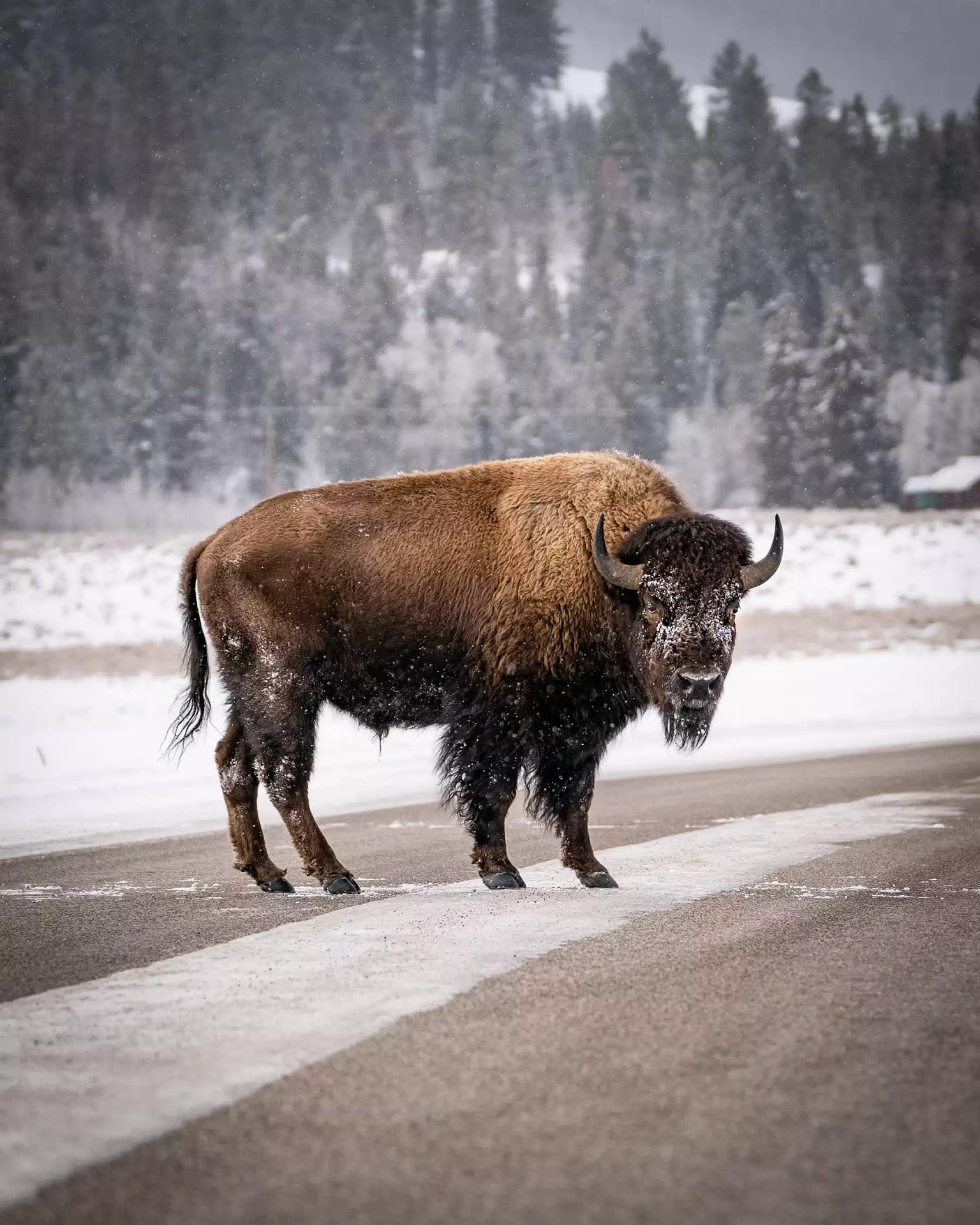
Tips for Planning RV Routes in Wyoming
- Subscribe to an RV-specific navigation app or use a truck/RV GPS system instead of your usual maps app.
- Bookmark the Wyoming Department of Transportation’s page detailing up-to-date closures, advisories and restrictions.
It’s still an excellent idea to double-check your RV routes in Wyoming and make sure they’re not among the state’s most dangerous roads. The majority of roads in Wyoming are navigable by RV, but some are not recommended for the largest of vehicles or trailers, nor for inexperienced RV drivers.
Teton Pass Highway (Highway 22)
A 17-mile stretch connecting Jackson, Wyoming with the Swan Valley region of Idaho, the Teton Pass Highway (WY-22) is universally recognized as a really bad road for RVs. It pops up on various lists of the most dangerous routes for big-rig RVs, and sometimes even claims the No. 1 spot. Congrats?
This rollercoaster-like RV route in Wyoming peaks at 8,429 feet, with a 10% grade on both sides, plus countless killer curves. It’s a twisting, turning, two-lane road with some of the steepest grades in the United States. It\’s a white-knuckle drive in a standard vehicle, and it’s a very bad idea to use this as an RV route in Wyoming.
The Teton Pass Highway is open year-round, but winter is obviously more treacherous and subject to frequent closures. Trailers are not allowed on the road in winter. Avalanches and year-round moose crossings are added hazards.
Do you need another reason to avoid this RV route in Wyoming? How about this: There are two runaway truck ramps, and to use them on an east descent, you need to cross to the left through head-on, uphill traffic. Visualize doing that in your RV — nightmare fuel!
Alternative Route
There’s a decent alternative RV route in Wyoming that connects Jackson with Idaho’s Swan Valley. The bad news is it takes a bit longer. The good news? It\’s not terrifying.
From Jackson, drive south 16 miles to Hoback Junction. Take 89 east to Alpine, then 26 toward Idaho Falls and a comprehensive network of highways.
East Entrances to Yellowstone
Yellowstone National Park has five entrances, most only open in summer. RV drivers entering Yellowstone from the east have three route choices, and two are bad. Here’s how to pick the one good RV route in Wyoming to reach Yellowstone from the east.
The Worst Choice: Highway 14A
U.S. Highway 14 Alternate (14A) is a scenic, remote road through the Bighorn Mountains. It runs 98 miles west-to-east from Cody to Burgess Junction, peaking at 9,455 feet and offering incredible views. None of that matters, because you’re not going to use this RV route in Wyoming. Highway 14A is closed in winter and challenging in summer, even in a regular car. Its steep grade, hairpin turns, and blind corners make it unsuitable for oversized vehicles and anyone uncomfortable with extreme mountain road driving.
The Other Bad Choice: Highway 14
Highway 14 closes for the winter between the east gate of Yellowstone National Park and Pahaska, although it remains open elsewhere. It’s not quite so curvy and steep as Highway 14-A, but still seriously scary in a large RV. Confident drivers with small motorhomes might consider it, but be prepared for one of the more challenging RV routes in Wyoming.
Safest for RVs: Highway 16
Highway 16 leading to the east entrance of Yellowstone is a safer, calmer, and easier route than Highway 14 or 14A. It’s well-maintained with minimal drop-offs, and it features passing lanes so you can trundle along and get speedier drivers off your rear end. Expect some long grades.
Northeast Entrance to Yellowstone: US-212
US-212 is a dramatic, scenic route through the Beartooth Mountains that connects to Yellowstone’s northeast entrance. It has steep grades, switchbacks, and snow along the roadsides even in summer. This route is not recommended for larger class A RVs, fifth-wheels, or inexperienced drivers. Others will generally be able to handle the road at a sensible pace.
Alternative Route
No other RV route in Wyoming crosses the same spectacular terrain as US-212. It’s so pretty that the route is a destination in itself. So, if you need to avoid driving on this road, adjust your itinerary and skip it.
U.S. Highway 287
Unlike the other dangerous RV routes in Wyoming highlighted here, U.S. Highway 287 isn’t so much a treacherous mountain road as an all-round hazardous one. In fact, Highway 287 is one of the most dangerous highways in the United States for road accidents.
The highway runs 1,791 miles from Texas to Montana, entering Wyoming through a pass between the Laramie and Medicine Bow mountains. It crosses I-80 at Laramie and continues north until it’s broken into two segments by Yellowstone National Park.
Because it’s such a major route and leads to the national parks, the highway gets lots of traffic, including big trucks, rushing locals, and scenery-gazing tourists. This combination leads to frequent collisions year-round.
The section of Highway 287 between Laramie and the state line is especially bad as an RV route in Wyoming. It includes the road’s 8,106-foot summit and several sections featuring three lanes — two southbound and one northbound. Local law allows northbound vehicles to pass using the southbound “suicide lane.” Avoid this section.
Alternative Route
It’s not necessary to totally avoid Highway 287 in your RV, but of course be careful. Skip the section south of Laramie when entering Wyoming from Colorado by using I-25 or US-85 to reach Cheyenne from the south. Go west to Laramie on I-80 or WY-210.
Tips for Planning RV Routes in Wyoming
- Subscribe to an RV-specific navigation app or use a truck/RV GPS system instead of your usual maps app.
- Bookmark the Wyoming Department of Transportation’s page detailing up-to-date closures, advisories and restrictions.

